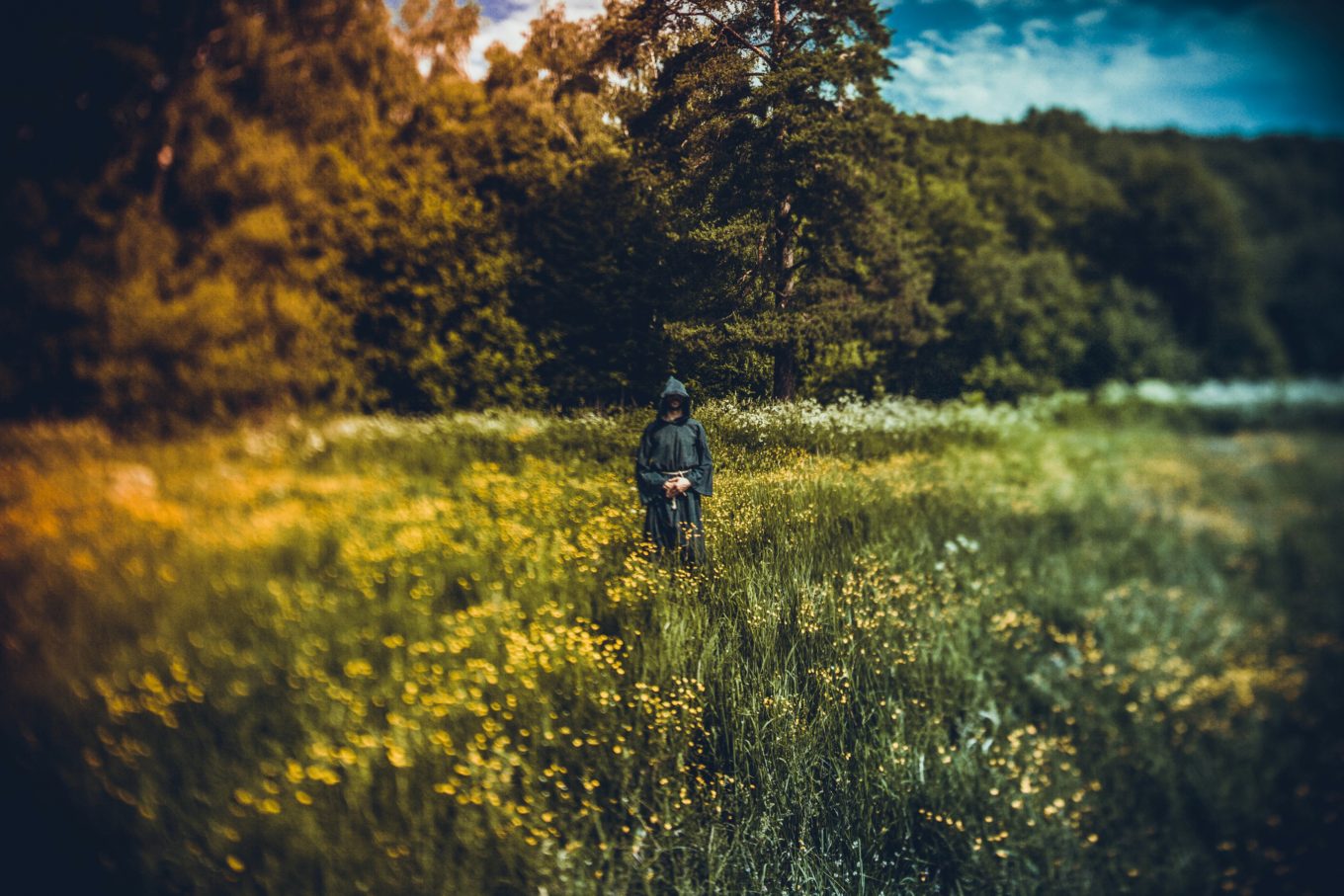An ancient, Celtic spiritual tradition that was nearly wiped out is being revived and adapted for new generations.
Druidry is a spiritual tradition that is based on the ancient Celtic cultures of Europe. It is a nature-based religion that focuses on the connection between people and the natural world. The three main branches of druidry are:
- Bardic Druidry: This branch focuses on creativity, self-expression, and the power of words. Bards were the traditional storytellers, musicians, and poets of the Celtic world, and their role was to preserve and share the wisdom and traditions of their culture.
- Ovate Druidry: This branch focuses on spiritual growth, personal development, and the power of intuition. Ovates were the seers, healers, and diviners of the Celtic world, and their role was to help people connect with the natural world and their own inner wisdom.
- Druidic Druidry: This branch focuses on community, leadership, and the power of group wisdom. Druids were the religious and political leaders of the Celtic world, and their role was to facilitate the spiritual growth of their communities and to help people live in harmony with the natural world.
When and where did it get started?
Druidry is an ancient spiritual tradition that originated in the British Isles and other parts of Europe. The Druids were a class of priests, judges, and teachers in ancient Celtic societies, and they were known for their wisdom and knowledge of the natural world. They were also believed to possess the ability to communicate with the spirit world and were often called upon to perform important rituals and ceremonies.
The origins of Druidry are shrouded in mystery, and it is difficult to say exactly when and where the tradition began. Some historians believe that the druids may have originated in the Bronze Age, while others believe that they emerged during the Iron Age. What is certain, however, is that the druids were an important part of Celtic culture and played a significant role in the spiritual and social life of the ancient Celts.
The druids were known for their knowledge of a wide range of subjects, including philosophy, astronomy, and natural history. They were also skilled in the art of divination and were often consulted by members of the Celtic nobility for advice on important matters. In addition to their spiritual and intellectual pursuits, the druids were also involved in a number of practical activities, such as lawmaking and the administration of justice.
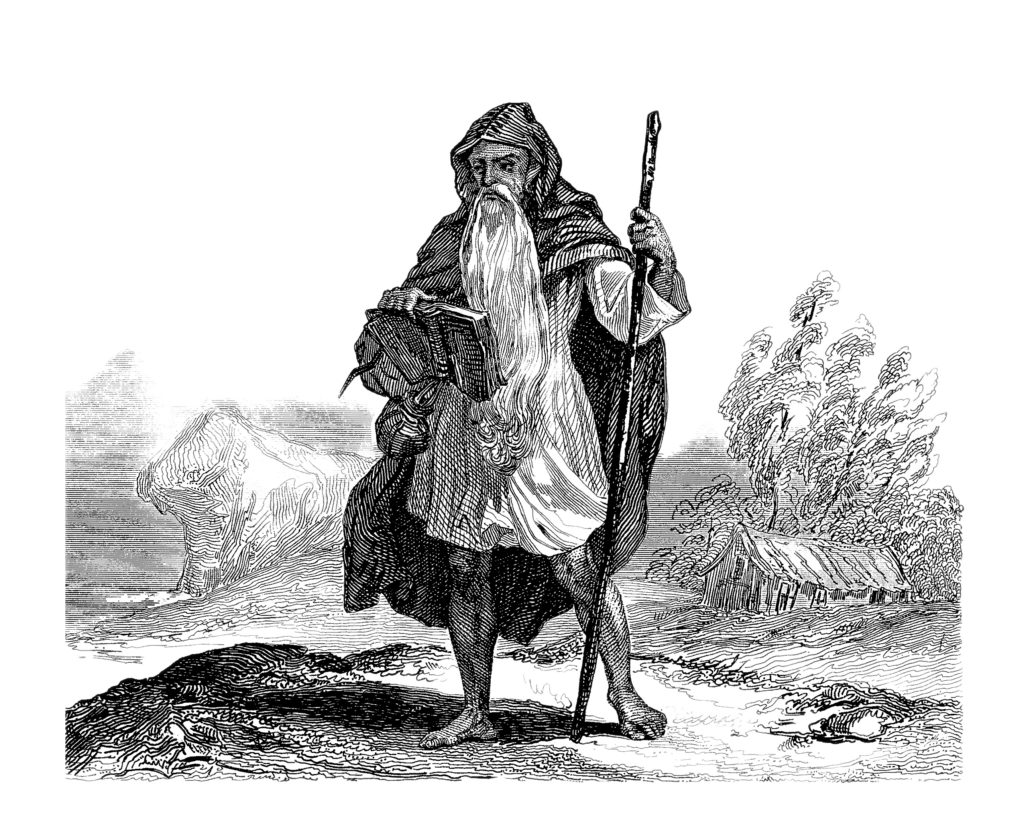
The druids were a very secretive and exclusive group, and little is known about their beliefs and practices. However, it is believed that they worshiped a number of gods and goddesses and that they believed in the concept of reincarnation. They also held a strong reverence for the natural world, and many of their ceremonies and rituals were centered around the cycles of the sun, moon, and seasons.
One of the most famous practices associated with Druidry is the druidic ceremony of oak and mistletoe. This ceremony involved the cutting of mistletoe from oak trees with a golden sickle, and the mistletoe was then used in various rituals and celebrations. The druids also performed a number of other important ceremonies, including the lighting of the Beltane fires and the celebration of the harvest festival of Lughnasadh.
Despite their importance in ancient Celtic society, the druids were eventually suppressed by the Roman Empire. The Romans viewed the druids as a threat to their rule, and they sought to stamp out the druidic tradition. As a result, many druids were killed or forced to flee, and the tradition was forced underground.
In the centuries that followed, the druidic tradition was preserved by a small number of devoted followers, who continued to practice in secret. In the 18th and 19th centuries, interest in Druidry began to reemerge, and a number of organizations were formed to revive the tradition. Today, Druidry is a growing spiritual movement, with a number of different branches and traditions.
So, did druids actually use Stonehenge?
There is no evidence to suggest that the ancient druids used Stonehenge. Stonehenge is a prehistoric monument that was built in the Neolithic and Bronze Age periods, long before the druids were a significant cultural group in the region.
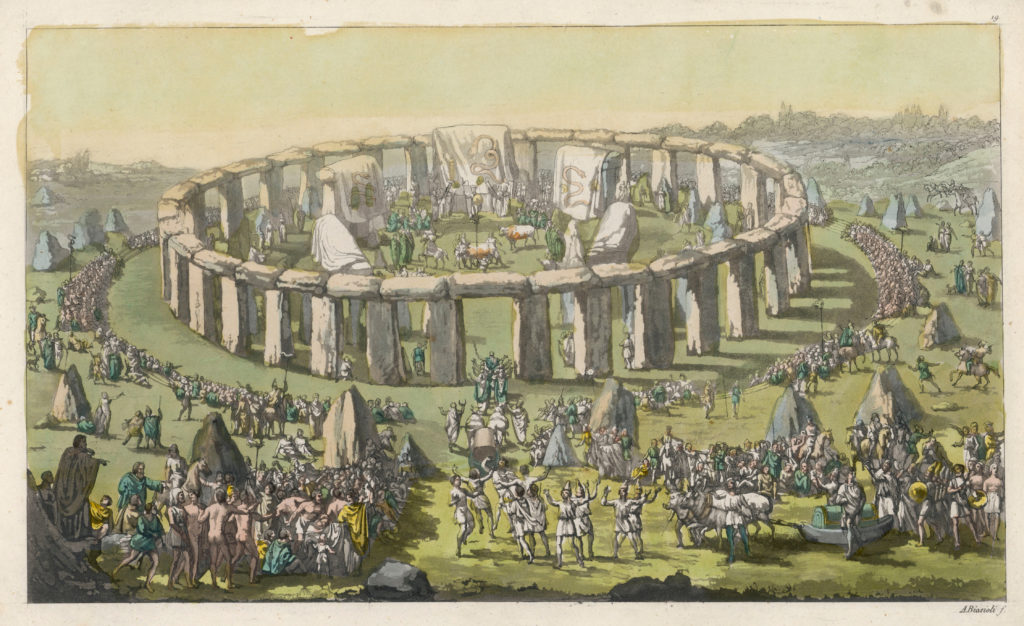
The druids were a group of religious and political leaders in ancient Celtic cultures, and they are most associated with the cultures of Ireland, Wales, and Gaul. The druids were known for their knowledge of astronomy, poetry, and medicine, and they played an important role in the religious and political life of their societies.
However, the druids did not exist at the time when Stonehenge was built, and there is no historical or archaeological evidence to suggest that they had any connection to the monument. Stonehenge predates the druids by several thousand years, and it was likely built and used by the indigenous people of Britain.
In fact, the idea that the druids used Stonehenge was actually a 19th-century invention, and it has no basis in history or archaeology. The idea was popularized by Romantic-era writers and artists, who were interested in the druids and their supposed connection to ancient British monuments like Stonehenge.
While the druids were an important cultural group in ancient Britain, they did not use Stonehenge. The monument was built and used long before the druids existed, and the idea that they were associated with the monument is a 19th-century invention with no basis in fact.
What is the “awen” symbol?
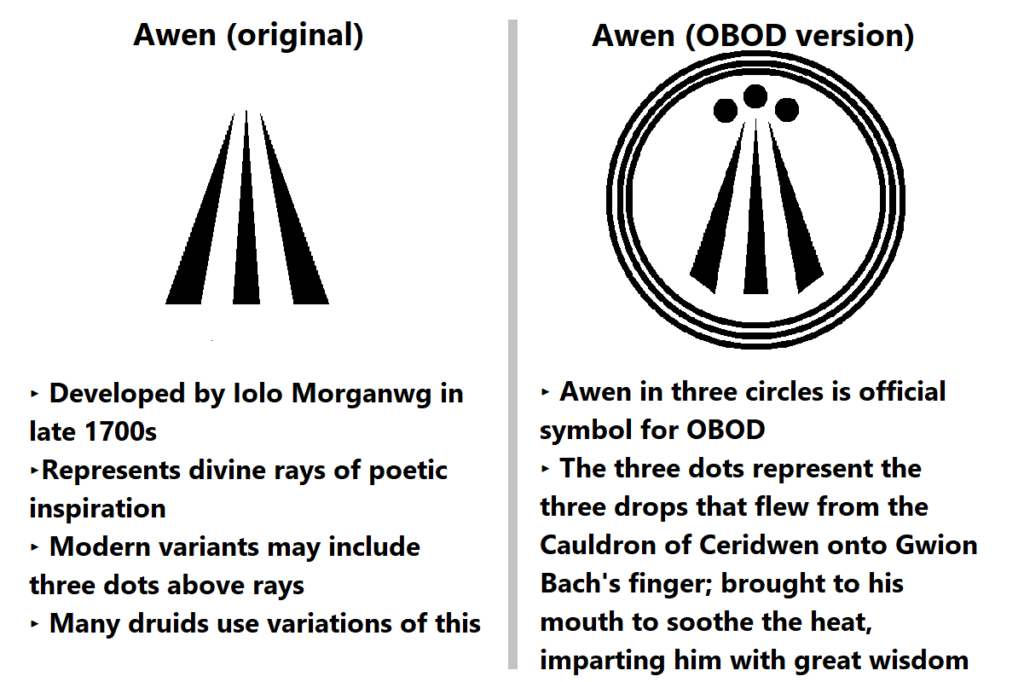
The awen symbol is associated with the druids and other practitioners of Celtic spirituality. The symbol consists of three rays that radiate out from a central point, and it is often depicted with or without a three circles at the point of origin.
The word “awen” is Welsh for “inspiration” or “essence,” and it is associated with the concept of divine inspiration and creativity. The symbol is believed to represent the flow of inspiration from the divine source to the individual, and it is often used as a symbol of creativity and artistic expression among practicioners.
How popular is Druidry in the United States today?
It is difficult to say exactly how popular Druidry is in the United States, as there are no reliable statistics on the number of people who practice this tradition. However, Druidry is a growing spiritual movement, and there are a number of different druid organizations and groups in the United States. Interest in Druidry has increased in recent years, and many people are drawn to its focus on nature, spirituality, and connection to the ancient past.
How does Druidry compare to modern witchcraft and heathenism?
Druidry, modern witchcraft, and heathenism are all distinct spiritual traditions with their own beliefs, practices, and histories. Druidry is an ancient tradition that originated in the British Isles and other parts of Europe, and it is focused on nature, spirituality, and the cycles of the sun, moon, and seasons. Modern witchcraft, also known as Wicca, is a contemporary spiritual tradition that has roots in ancient pagan practices. It is focused on the worship of nature and the practice of magic. Heathenism, also known as Asatru, is a modern reconstruction of the ancient Norse religion. It is focused on the worship of the old Norse gods and goddesses.
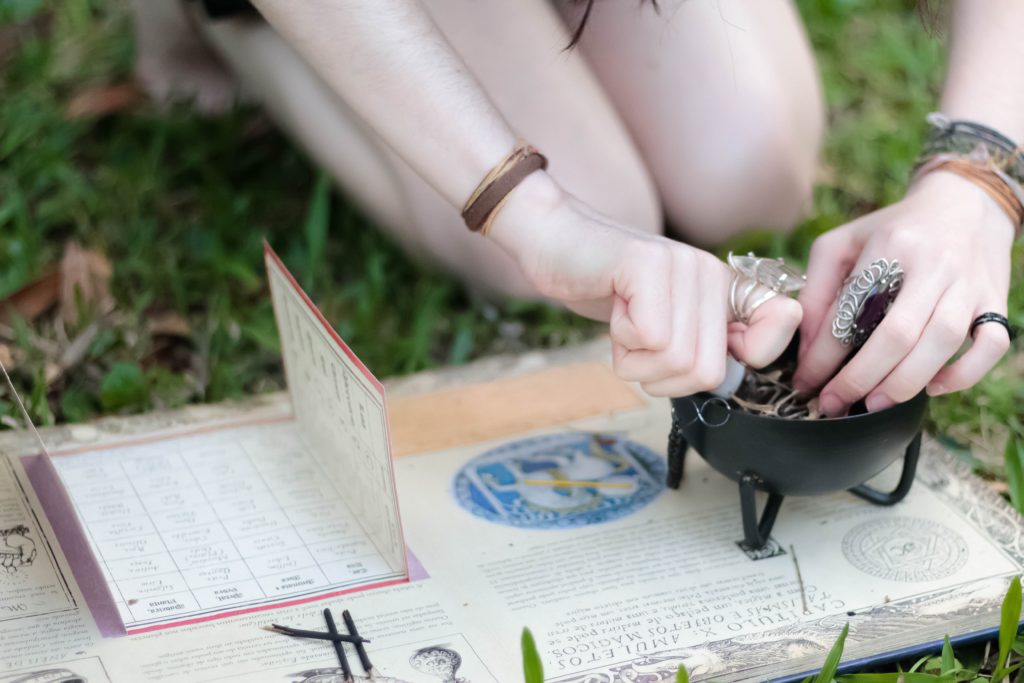
While there are some similarities between these traditions, they are all unique and have their own distinct characteristics. For example, druids may practice divination and other spiritual rituals, while witches may focus on the practice of magic and spell-casting. Heathens, on the other hand, may focus on the worship of Norse gods and goddesses and the observance of ancient Norse traditions and customs.
Overall, while Druidry, modern witchcraft, and heathenism may share some common elements, they are all separate and distinct spiritual traditions with their own beliefs, practices, and histories.
Is it possible to become a druid today?
Yes, it is possible to become a druid today. While the ancient druidic tradition was suppressed by the Roman Empire and went underground for many centuries, it has been revived in recent times and there are now a number of different organizations and groups that offer training and initiation into the druidic tradition.
Becoming a druid typically involves studying the history and beliefs of the tradition, learning about the natural world and the cycles of the sun, moon, and seasons, and participating in druidic ceremonies and rituals. Some druid organizations also require that aspiring druids undergo a period of apprenticeship or mentorship before being initiated as a full member an order.
While the path to becoming a druid may vary depending on the organization or group you choose to study with, the process typically involves a commitment to learning, personal growth, and service to the community. If you are interested in becoming a druid, you can research different druid organizations and groups to find one that aligns with your values and beliefs.
What are some good resources for studying Druidry?
If you are interested in studying Druidry, there are a number of resources that can help you learn more about this ancient spiritual tradition. Some good places to start include:
- Books: There are many books available on the subject of Druidry, both academic works and those written by contemporary druids. Some recommended books on Druidry include “The Druidry Handbook” by John Michael Greer, “Druid Mysteries” by Philip Carr-Gomm, and “The Druids” by Nora K. Chadwick.
- Online courses: A number of online courses on Druidry are available, offering a structured and comprehensive way to learn about the tradition. These courses can be a great way to gain a solid foundation in the history, beliefs, and practices of Druidry.
- Druid organizations and groups: Many druid organizations and groups offer classes, workshops, and other opportunities to learn about Druidry. Joining a group can provide a sense of community and support as you learn more about the tradition.
- Conferences and festivals: Conferences and festivals on Druidry are a great way to connect with other people interested in the tradition, learn from experts and practitioners, and experience druidic rituals and ceremonies.
Overall, there are many resources available for studying Druidry. By taking advantage of these resources and engaging in self-study, you can gain a deeper understanding of this fascinating and ancient spiritual tradition.

